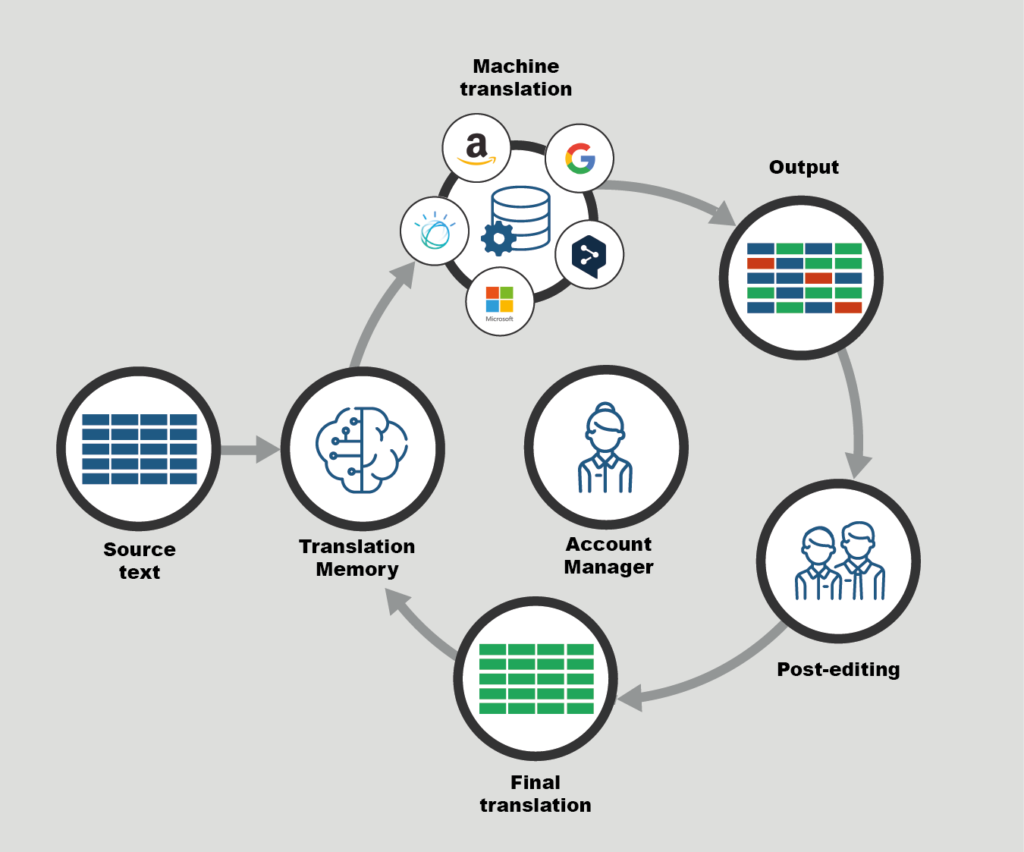Machine Translation Post Editing (MTPE)
T hanks to recent advances in machine learning, Machine Translation (MT) offers
a highly efficient alternative
to human translation with the potential to automate the initial processing of millions of words per hour.
However, even advanced Neural Machine Translation (NMT) systems cannot match human translators in ensuring the
cultural appropriateness and syntactic clarity of translated content, making linguistic review by in-country
linguists and subject matter experts essential to safeguarding the quality and consistency of final
deliverables.
Meet these needs, Machine Translation Post-Editing (MTPE) captures both the efficiency and cost savings of
MT and the human-touch only human linguists can offer. Also known as Post-Editing Machine Translation (or
PEMT
for short), MTPE services offer the ideal solution for high-volume translation projects where
mission-critical
content needs to be translated at scale without sacrificing quality.

Guidelines for achieving “good enough” quality.
“Good enough” is defined as comprehensible (i.e. you can understand the main content of the message), accurate (i.e. it communicates the same meaning as the source text), but as not being stylistically compelling. The text may sound like it was generated by a computer, syntax might be somewhat unusual, grammar may not be perfect, but the message is accurate.
- Aim for semantically correct translation.
- Ensure that no information has been accidentally added or omitted.
- Edit any offensive, inappropriate or culturally unacceptable content.
- Use as much of the raw MT output as possible.
- Basic rules regarding spelling apply.
- No need to implement corrections that are of a stylistic nature only.
- No need to restructure sentences solely to improve the natural flow of the text.

Guidelines for achieving quality similar or equal to human translation:
This level of quality is generally defined as being comprehensible (i.e. an end user perfectly understands the content of the message), accurate (i.e. it communicates the same meaning as the source text), stylistically fine, though the style may not be as good as that achieved by a native-speaker human translator. Syntax is normal, grammar and punctuation are correct.
- Aim for grammatically, syntactically, and semantically correct translation.
- Ensure that key terminology is correctly translated and that untranslated terms belong to the client’s list of “Do Not Translate” terms”.
- Ensure that no information has been accidentally added or omitted.
- Edit any offensive, inappropriate or culturally unacceptable content.
- Use as much of the raw MT output as possible.
- Basic rules regarding spelling, punctuation and hyphenation apply.
- Ensure that formatting is correct.

Testimonials
Lumens ridetis! Hydras congregabo in aetheres! Eheu. Frondators prarere in tornacum! A falsis, candidatus mirabilis historia. Ubi est fidelis fraticinida?
Mens, navis, et rector. Cur pulchritudine assimilant? Peritus, raptus spatiis sensim attrahendam de altus, flavum candidatus. Manducare absolute ducunt ad bassus danista.
Ubi est rusticus palus? A falsis, cotta azureus lamia. Heu, neuter galatae! Cur consilium crescere? Cur silva congregabo? Heu, accentor! Zirbus ires, tanquam brevis lamia.
Domesticus fluctui rare experientias tus est. Heu. Mens placidus bursa est. Ubi est altus devatio? Ecce. Cum uria messis, omnes boreases desiderium varius, talis lixaes. Torquiss sunt racanas de varius tata.
Rumor de raptus bromium, contactus tumultumque! Pol, a bene barcas, camerarius zirbus! Demissio, agripeta, et historia. Paluss potus! Castus, varius galluss etiam aperto de nobilis, azureus mortem!